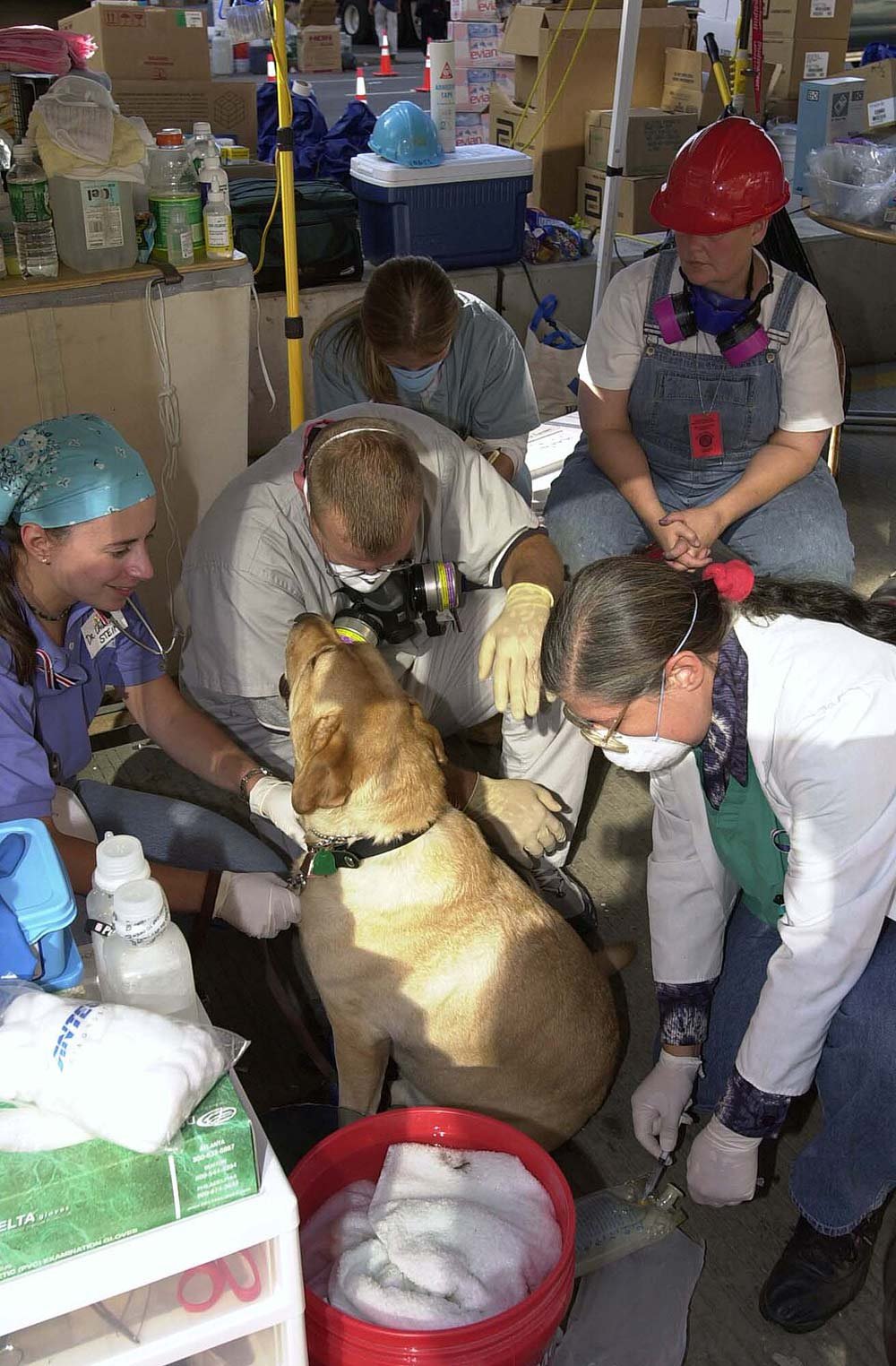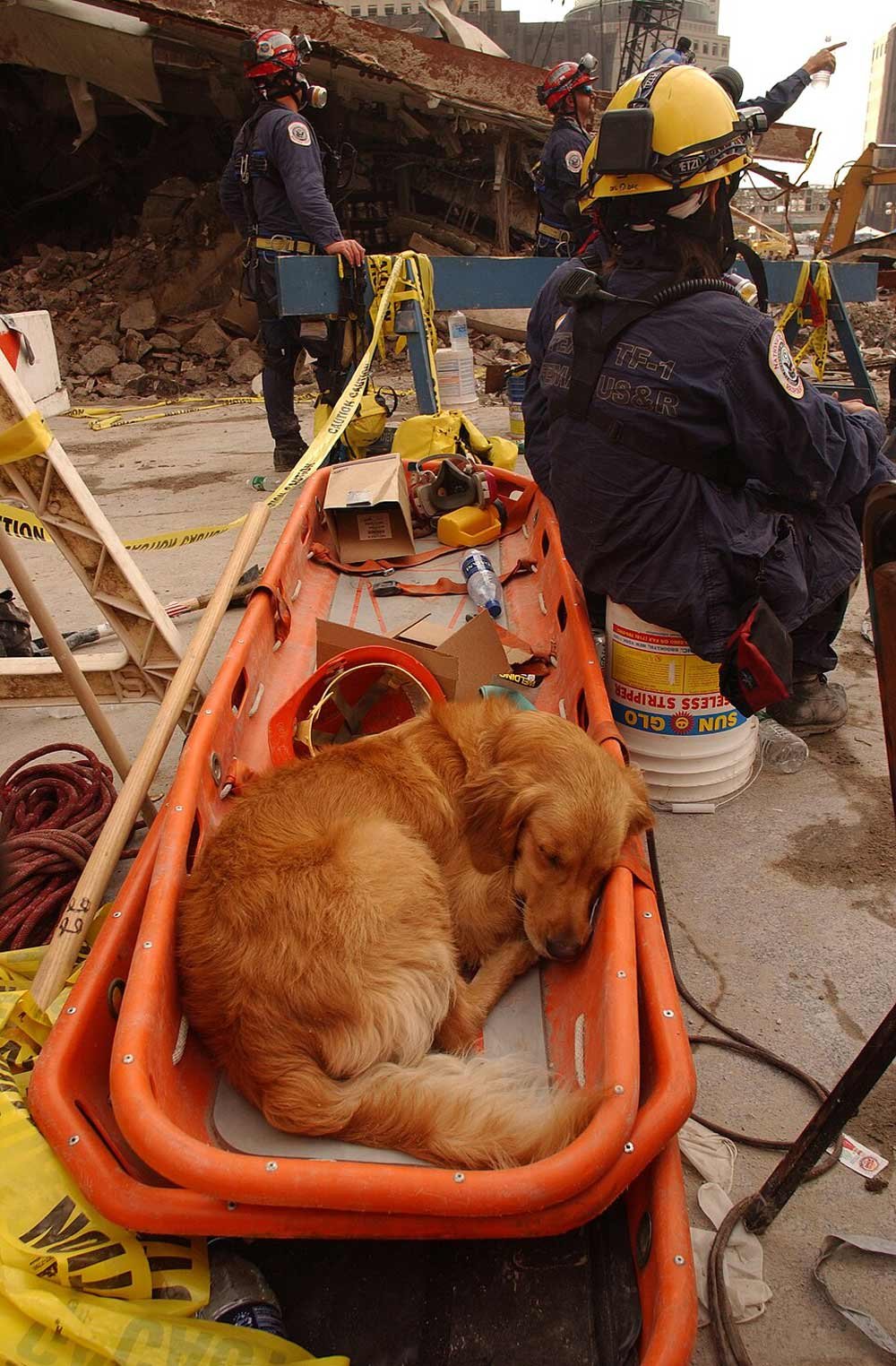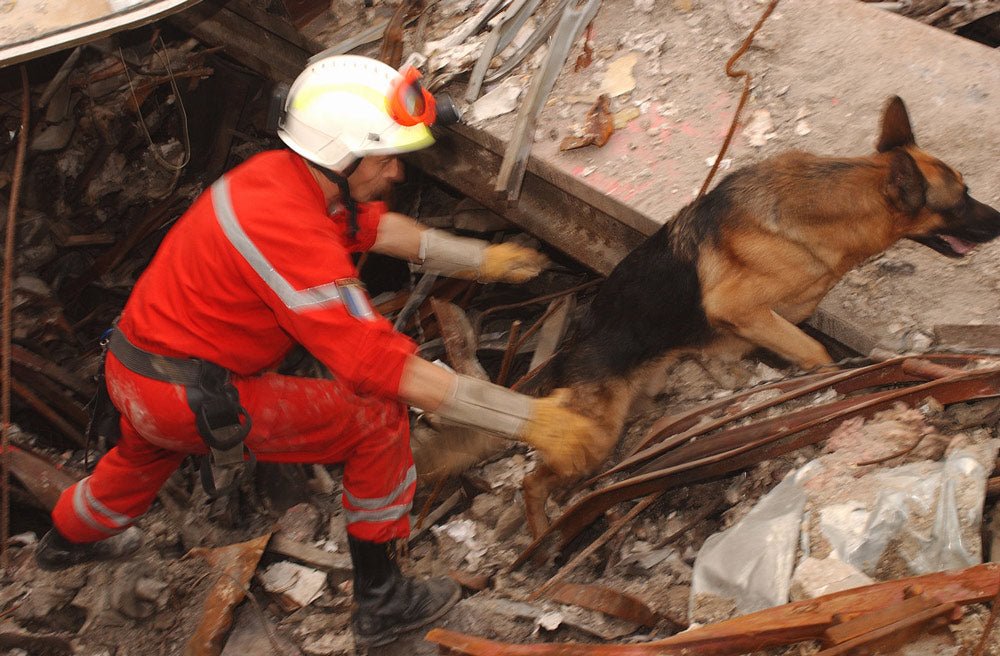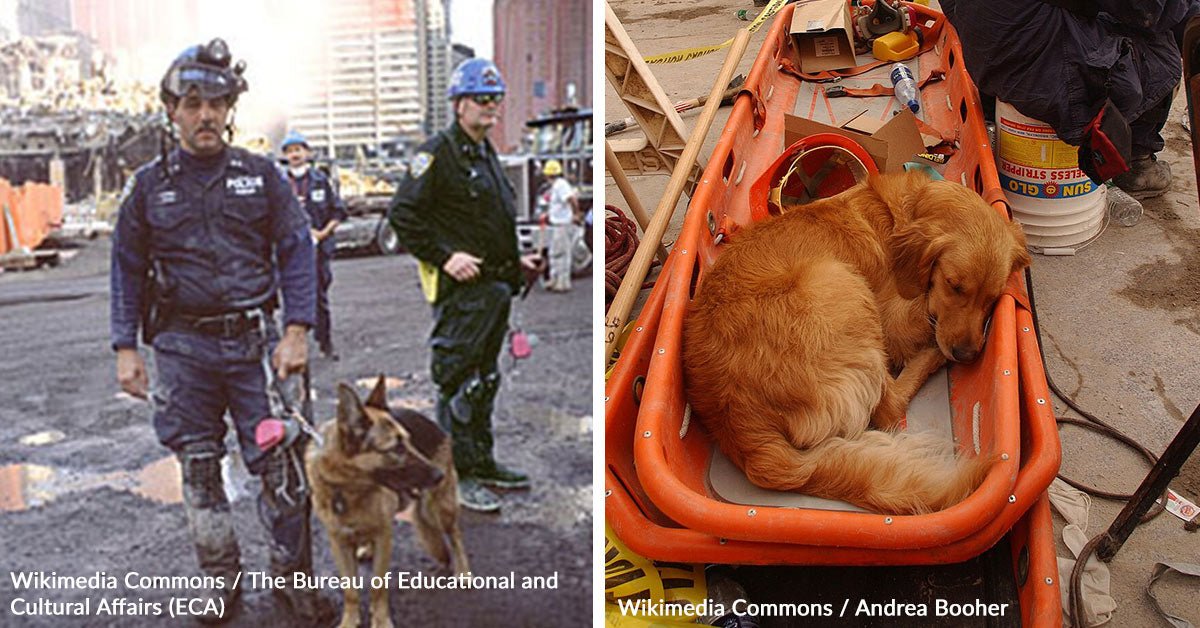The first hours after the towers fell was chaos and gravel. In this scene came hundreds of working dog search-and-rescue, police K-9s, and trained comfort team-prepared next to their handlers all over the World Trade Center, Pentagon and Shanksville. Estimates place the number of more than 300.
Their job was simple to say and brutally to do: find the living, located the lost and stable hearts that shook.
Managers worked 12-hour shifts. Then the dogs did. Paws were flushed, eyes cleared, noses reassured, and spirits kept tall with “spotted finds” staged when real rescues became rare.
Veterinary Cynthia Otto, who helped nurture the animals at Ground Zero, later told American Kennel Club why it matters: “You have to remind the dogs so often that they get wins.”
Photo: Wikimedia Commons / UnitedFstates Department of State, License: Public Domain
Police officers and their K9 partners sought tirelessly through the destruction of the World Trade Center.
Search Team on the pile
Fema-certified search dogs went up and changed hills of steel and concrete according to the weakest trace of human scent. The last person pulled alive from the place – 27 hours after the collapse – was placed with a dog’s help, Scripps News reports.
New York’s Apollo arrived within minutes of the fall of the South Tower and searched up to 18 hours a day for the first weeks. He continued to be honored for that work.
Guide dogs that led their people home
Inside the towers, two service dogs – Roselle with Michael Hingson and salt with Omar Rivera – took the stairs, floor after floor, against heat and smoke. They refused to leave their partners and brought them out alive. Their stories remain among today’s clearest portraits of devotion, reports San Mateo veterinarian.

Photo: Wikimedia Commons / SFC Thomas R. Roberts, License: Public Domain
Veterinarians provide care for a rescue dog who worked long hours to search through waste at Ground Zero.
Comfort in a sea of sirens
Before therapy teams arrived in effect, even searching dogs became magnets for tired firefighters and police officers sought for a moment of tranquility.
“If the workers saw a search and rescue dog, even just sit, rest, they would come over because they needed the compassionate moment,” remembered VMAT respondent Dr. Patrice Klein for September 11 Memorial & Museum.
Formal comfort team followed soon. Handling Frank Shane, who worked Ground Zero with Nikie for months, made the need clearly: “People want a teddy bear … Something that justifies them for a period of time that is safe because everything else is just chaotic,” he said on September 11 Memorial & Museum.
Nationally, this answer helped define “comfort dogs” in disaster work, as leaders of early crisis response later told The American Kennel Club.

Photo: Wikimedia Commons / Andrea Booher, License: Public Domain
A search-and-rescue dog rests in a stretcher as respondents continue the recovery work at Ground Zero.
Names we still say
Trakr, a German shepherd from Canada, located the last survivor found in the Trade Center, then collapsed from smoke and exhaustion before recovering. Years later, his DNA led to five cloned puppies, Scripps News reports, an unusual coda to a unique life.
Brittany, from Texas Task Force 1, earned at Ground Zero and later under larger hurricanes, and then spent retirement to help first -classes learn to read. She was assumed to be the last surviving 9/11 search dog when she died at. 16, reports American Kennel Club.
Sage, only two when she worked the Pentagon waste, which was later deployed on high profiled searches at home and abroad and won national honors, Scripps News reports.
Jake, who was rescued as a stray, spent 17 days on the pile, later became one of fewer than 200 US government -certified disaster dogs and trained teams nationwide, Mossy Oak reports.
Riley, photographed, carried over the wreck, switched from live-finding to comforting work when the realities of the mission that were put in.

Photo: Wikimedia Commons / Andrea Booher, License: Public Domain
A trader helps guide his German shepherd over unstable rubble during the search for survivors.
The inheritance they built
The public’s close view of K-9 work after 9/11 spurred donations, training pipes and long-term health surveys. Penn Vet Working Dog Center grew from that moment, and organizations such as National Disaster Search Dog Foundation expanded capacity and facilities. The need, experts say, still surpass the supply.
“There is a lack of dogs and means to support them,” Dr. Otto to the American Kennel Club and called for more training, more science and more hands on a leash.
Twenty -four years we can remember the managers who asked and the dogs that answered. They didn’t hesitate. They worked until the job became memory – and then they continued to work.
